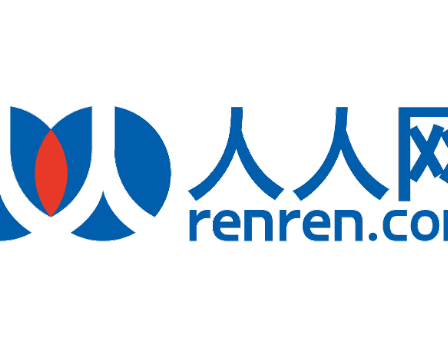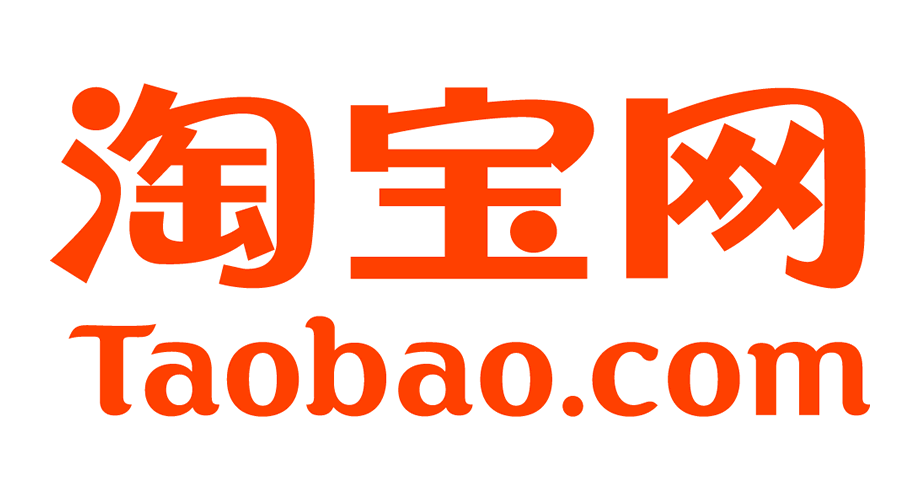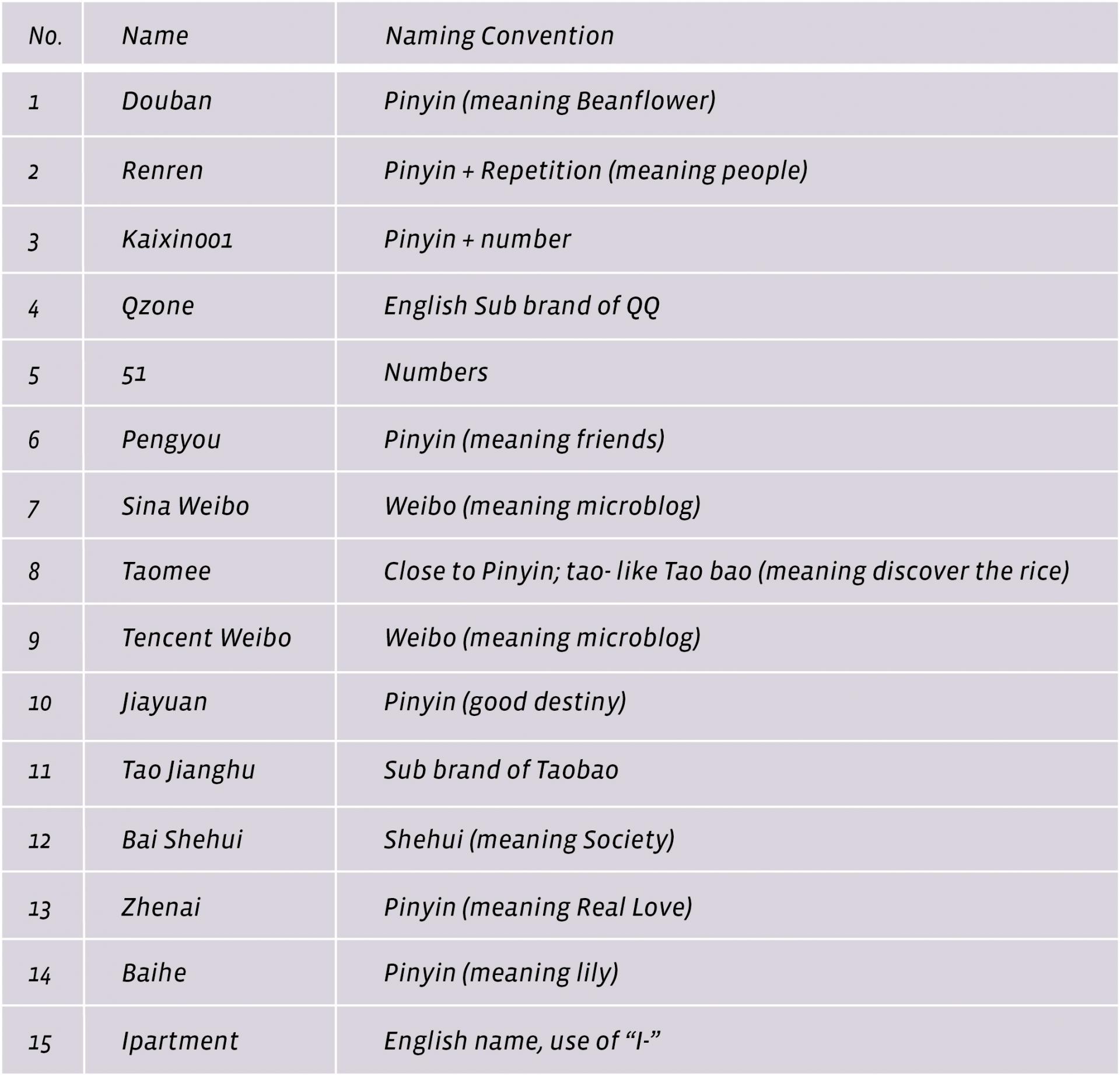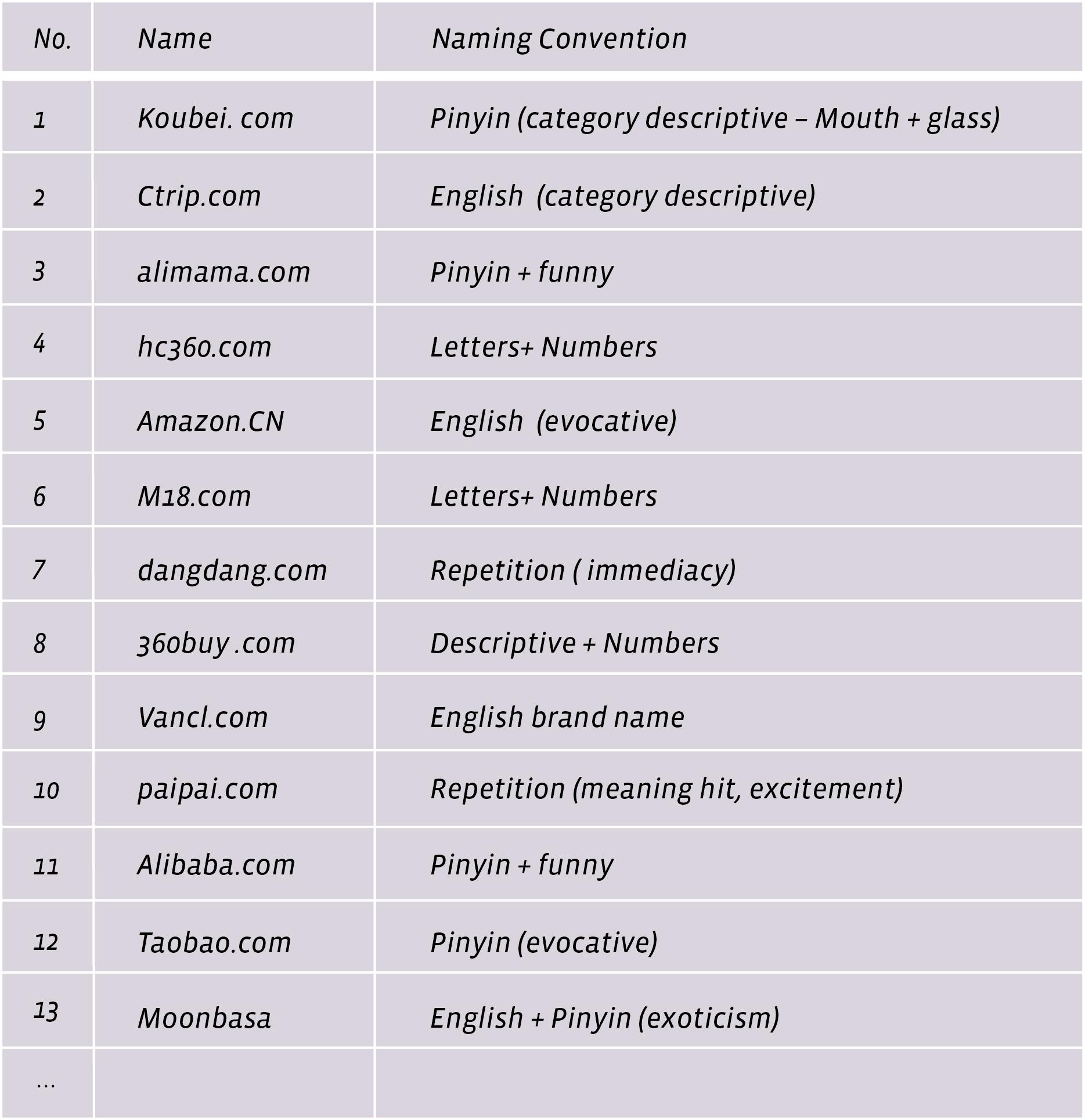

Chinese Naming for Online Brands: How to Stand Out from Competitor. The internet age has struck almost every corner of the globe. We use the internet to obtain information, to check the news, to indulge in online shopping, and to expand our social circle. In China, over 450 million people now use the internet – this is more than the entire population of the U.S (Wright, Bryan; January 19, 2011). About 92% of all internet users in China engage in some sort of social media, whereas this is true of only 72% of Americans (Millward, Steven; May 2, 2011).
In a world of continuous competition and innovation, these online platforms such as social networking or e-commerce sites aim to establish their own unique symbolic identity.Such sites have surfaced all over the world, but only those that manage to connect with the majority of users remain successful. Regardless of where such online platforms are founded, the company’s brand name is essential to public recognition. Its careful creation can carry inherent value to the brand and the service that it provides.
Crafting a Chinese naming for online brands is more than a linguistic choice—it’s a strategic necessity for success in the Chinese market. A brand’s name serves as a vital means of communication, embodying the company’s culture, and shaping the user experience. This holds immense significance, especially for social networking sites reliant on word of mouth and consistent exposure for familiarity. Foreign brands disconnected from local culture risk losing their appeal with an ill-chosen name. Beyond aesthetics, creating a suitable brand name involves resonating with Chinese consumers when entering the Chinese market. Success hinges on securing a conceptual identity within the local context. Employing the Chinese language for brand names becomes instrumental in reaching a broader Chinese audience. When local users can identify with a brand through language or cultural meaning, their willingness to engage and continue using the brand significantly increases. A notable case is LinkedIn, a widely used American site in China without a Chinese name. This absence of a recognizable local identity could contribute to LinkedIn’s lower acknowledgment and popularity in China, highlighting the importance of adopting a Chinese name for effective communication and fostering public popularity.
How do social networking and e-commerce sites attract and maintain regular users? Current trends in popular names within China reveal that many of these companies tend to incorporate Hanyu pinyin (the official system to transcribe Chinese characters into the Roman alphabet), numbers, word repetition, as well as hidden underlying meanings into their brand names. China’s well-known online shopping site TaoBao (淘宝), as well as local micro-blogging site Weibo (微博), both use Hanyu pinyin in their name. TaoBao (淘宝), which literally means ‘to look for treasure’, conveys the idea that consumers can easily discover what they desire by using the services their site has to offer. Another social networking site RenRen (人人) utilizes pinyin as well as repetition to enhance brand impression on local users. The Chinese name 人人网 (RenRen Network) literally means ‘a site for everyone’, which suggests a very welcoming and friendly environment where people can get to know each other.



Furthermore, top websites use numbers in their names. In China, different numbers have different meanings. For example the number 5 is associated with lucky in ancient Chinese philosophy due to its correlation with the five elements (water, fire, earth, wood, and metal). Also, the number 8 sounds similar to发 (fa), which means to prosper. The number 9 sounds is a homophone for the character 久 (jiu), which symbolizes longevity and everlasting.

Table 2 Popular Chinese E-commerce Site Names

For foreign companies attempting to enter the Chinese market, creating a newly localized brand name is a must. Many companies commonly use one of these three methods of translation: phonetic, semantic (meaning), or a mixture of the two. Studies suggest that the majority of such brands tend to use direct phonetic translations of brand names. Although this could be useful in preserving the country origin of the brand to remind Chinese consumers that it is foreign brand, it may also be hard for Chinese users to remember and identify with the name, as there is no existing meaning behind it.
Companies that choose to phonetically translate their brand into a name devoid of real meaning could be doing more harm to themselves than good. For example, the American search engine Google attempted to translate its name into Chinese in April 2006. They announced their new Chinese name to be谷歌 (GuGe), which does not exactly have a true meaning, but literally translates into “harvest song.” The outcome – Google did not successfully promote its services in the Chinese market, as the new name seemed to suggest an old fashion feel associated with agriculture. Perhaps this is a reason why Baidu is such a widely accepted search engine in China.


Another example of an unsuccessful brand name creation is the case of American social networking site MySpace, which officially declared its Chinese name to be Juyou (聚友) – ‘bringing friends together’. Many Chinese users criticized this new name, as they believed that the purpose of MySpace was not just to make friends. They argued that this name did not entirely represent the true function of MySpace, and thus was misleading to consumers.
Apologies for that oversight. Here’s the revised paragraph with the keyword included:
All in all, an appropriate Chinese Naming for Online Brands is the first step to building a lasting impression. Regardless of the type of company you are or the type of service you wish to provide, your brand name needs to be catered to the local context of your consumers – what better way than to be identifiable in the local language? Generating a good brand name is not just a simply brainstorming exercise- great consideration and skill goes into fashioning a name that leaves a permanent imprint in the minds of local consumers. It is particularly important for social networking sites and e-commerce sites who do not have multiple touch points with its consumers to have a brand in the local Chinese language. This way, community users can easily refer to such sites and also form a deeper connection with the company’s services. Creating a local brand name requires a set of skills: creativity, linguistic accuracy, and knowledge to conduct proper legal and market checks to develop the best Chinese Naming for Online Brands. It is necessary to take such meticulous care in the process of creating a brand name that applies to the Chinese market – especially for foreign companies who aim to thrive in China. As has seen in the previous examples, a wrong move could lead to detrimental consequences and diminished success.
DOWNLOAD REPORT
A Labbrand Group Company © 2005-2025 Labbrand All rights reserved
沪ICP备17001253号-3To improve your experience, we use cookies to provide social media features, offer you content that targets your particular interests, and analyse the performance of our advertising campaigns. By clicking on “Accept” you consent to all cookies. You also have the option to click “Reject” to limit the use of certain types of cookies. Please be aware that rejecting cookies may affect your website browsing experience and limit the use of some personalised features.